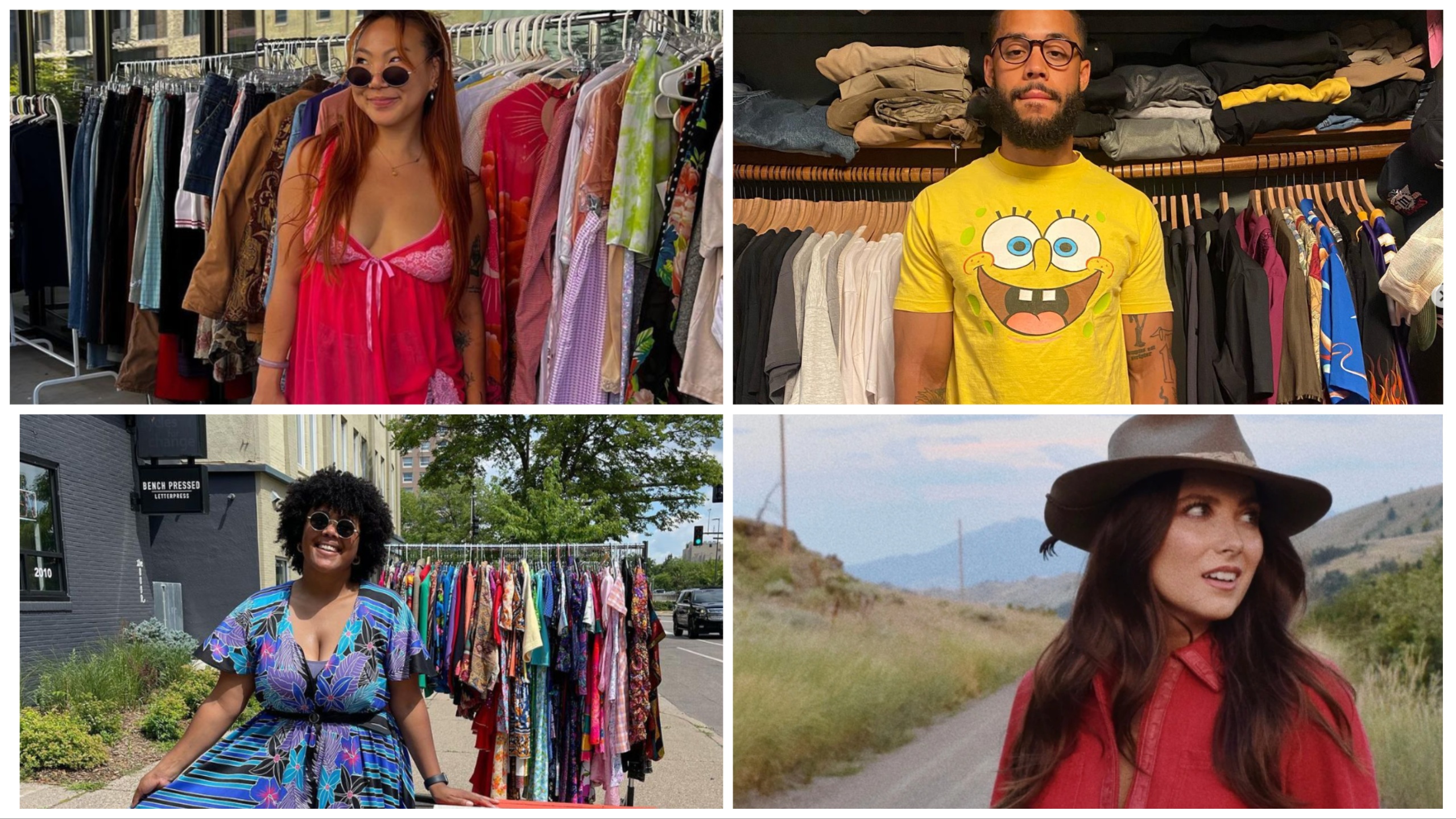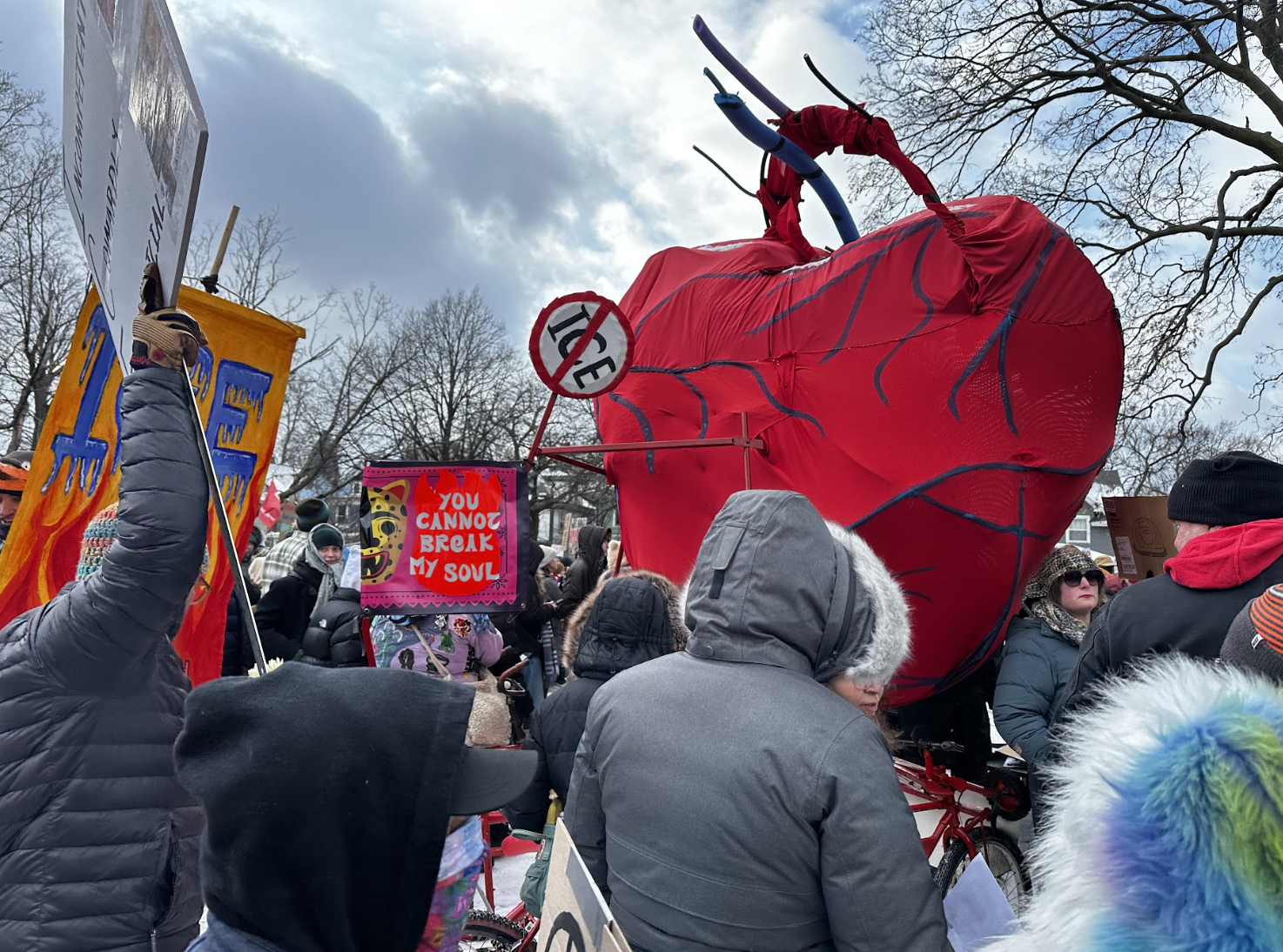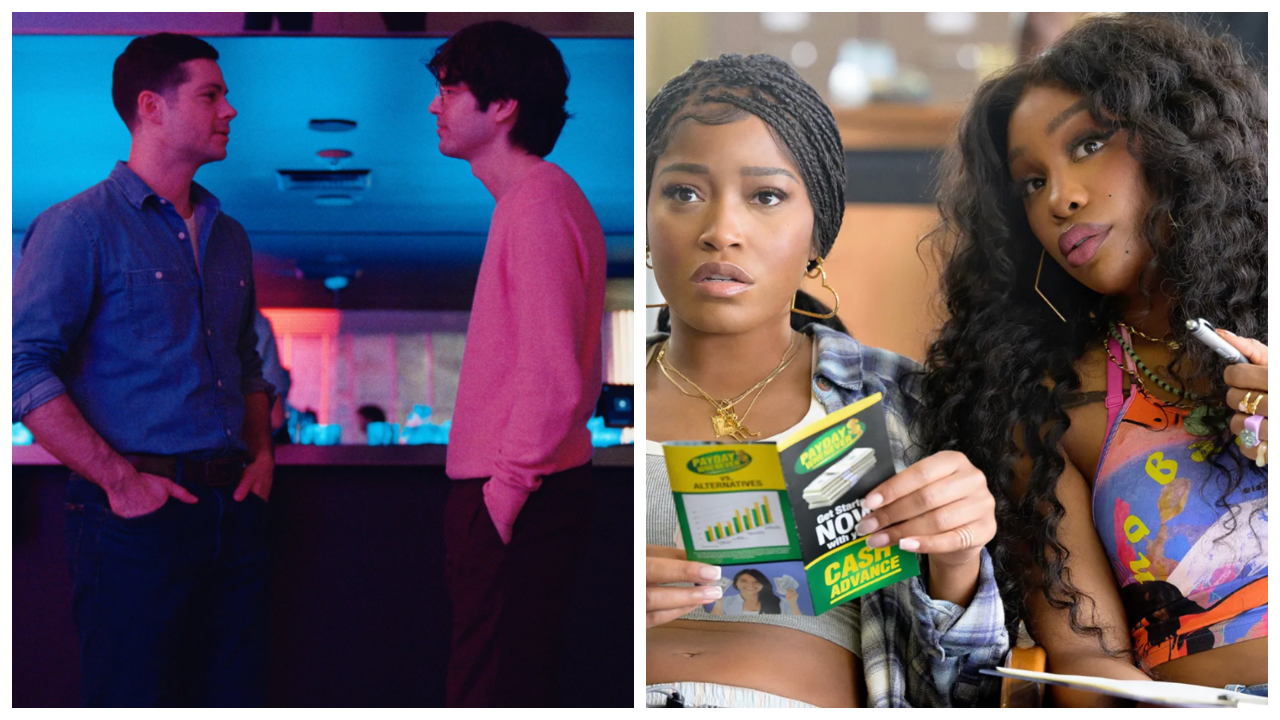For the vintage enthusiast, Instagram can be a great way to find new sellers, whether you’re looking to shop online or in person at a pop-up. But what about the vintage sellers? Is social media still a key ingredient in becoming a successful vintage business? Does Instagram offer a secret business advantage?
We checked in with four local vintage sellers that used Insta as a starting point for their business, be it through promotion or full-blown sales.
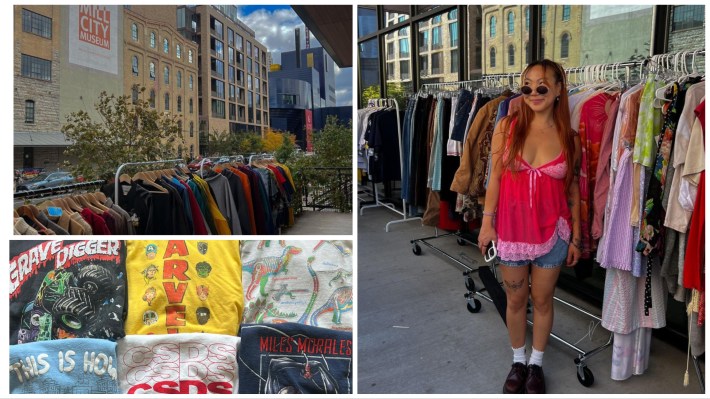
From Instagram to Better Sales Through Pop-Ups: You Thrifty Bitch
Though she got her start on Instagram, Madolyn Jin really credits the success of You Thrifty Bitch to the pop-ups she hosts near the Mill City Farmers Market, where she gets a lot of wandering foot traffic. Curated mainly for Gen Z and millennial femme styles, Jin says she sells clothing that she think would look good as a part of a fun, creative outfit.
“It’s curated to [my] personality,” she says. “I have a lot of Y2K, old granny style, and a mismatch of everything in between.”
While You Thrifty Bitch has been around since 2019, Jin says she started “getting serious” with it this summer, hosting weekly pop-ups every Saturday, often with fellow vintage seller Wasted Retail. These days, it’s tough to keep the shop’s online info up to date.
“Things flip through so fast at the pop-ups that I haven’t been selling online as much,” she says. “Online now has kind of turned into advertising and driving people to my pop-ups… When you have a pop-up you sell 20 pieces, then you have to go through and delete them off your page—it’s a lot of work.”
With the formidable Minnesota winter coming, Jin has been looking for a permanent storefront, or any place indoors that's willing to host her.
“I’m nervous for the winter. I don’t know how it will be,” she says. “It will be hard traveling and packing up to different spaces.”
Regardless of how the winter months could impact her business, Jin is still dedicated to in-person markets over online sales. Why stop hosting them when they do so well?
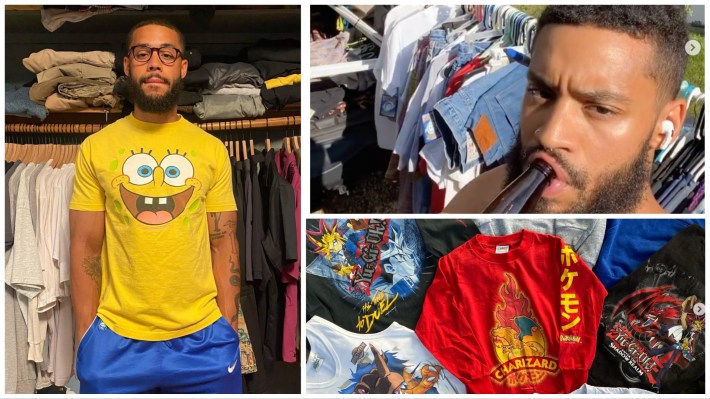
Depop and Pop-ups: Wasted Retail
Started by Dylan Davison and Julian Carter four years ago, Wasted Retail is all about the two friends' love for vintage clothing and its sustainability. After working in retail for five years, Davison had become all too aware of the overproduction of fast fashion and its wastefulness.
“So much clothing ends up in a landfill or in the thrift store,” he says. “We’re not trying to save the planet by thrifting, but that’s where the name came from.”
Wasted Retail specializes in men’s clothing, including '90s rap tees, thick Carhartt jackets, and '80s tourism hoodies, and operates primarily through pop-ups with You Thrifty Bitch, Dual Studios, Juniper Lou, and others. While they have a general Instagram for promotion, they don’t have an Instagram shop; Wasted Retail’s Depop acts as their online platform for interested buyers.
“It’s kind of hard to always be updating our sites, because I was posting on Depop for a while but then we would bring our stuff that we had posted to our sales, and it would all sell out,” Carter says. “We’re trying to find a middle ground of when to post a lot of stuff but also have that stuff at our sales.”
The two dream of opening up a storefront for Wasted Retail sometime in the future, perhaps working with Jin of You Thrifty Bitch on a brick-'n'-mortar collaboration. For now, their Instagram acts as their exclusive sneak peaks to upcoming pop-ups and Depop drops.
“Hopefully we will actually start the process of getting a physical location soon,” Davison says.
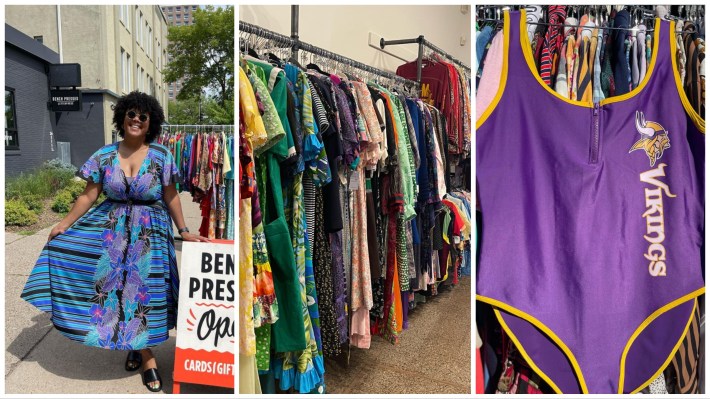
Going Full Brick-'n'-Mortar: Everyday Ejiji Vintage
After operating solely on Instagram for three years, Ashley Becerra’s pandemic project, Everyday Ejiji, is now a storefront at 4501 S. 34th Ave. in Minneapolis. Focused on empowering BIPOC- and women-owned businesses, the shop also hosts vintage markets and fashion shows featuring other Twin Cities vintage sellers who need a space to sell.
Everyday Ejiji’s styles and aesthetics fluctuate with the seasons, but often leans toward bold patterns and colorful dresses, trousers, and blouses. As for why Becerra got into the vintage game, her goal is to offer size inclusive clothing beyond just “large.”
“I’m a full-figured person myself," she says. "And I felt really disheartened going to certain vintage shops and being like, ‘OK, am I going to get a pair of earrings or a purse today? Because nothing in here fits me.'"
While Becerra prefers having a physical store to shop from, she acknowledges that, as a business owner, she cannot ignore online business. These days, she mostly uses EE’s website for online sales and Instagram as a point of advertising.
Becerra says she doesn’t notice a huge difference in revenue between selling via a website versus a storefront. “It’s a mixed bag where some months are very heavy [in the] store and other months, it’s very heavy online,” she says.
She believes that a lot of it comes down to what you carry.
“Some styles are easier to sell primarily online, like streetwear," she says. "It’s easier to gauge if you know this T-shirt or know this sweatshirt fits because it’s a straight size. The more intricate you get with garments and garment structure, that makes it a little bit harder to eyeball.”

From Venmo to a Proper Website: West of Vintage
Not everyone has brick-'n'-mortar aspirations. Unlike You Thrifty Bitch, Everyday Ejiji, and Wasted Retail, Michaela Reardon’s West of Vintage operates primarily through her website—and she plans to keep it that way.
The shop began about a year and a half ago as an extension of having too many vintage clothes in her personal collection. Now, it’s a full-fledged side hustle.
“The niche focus of my shop is anything with a Western flare,” she says of West of Vintage’s aesthetic. “It’s not always full ‘yee-haw’ but has some sort of Western touch to it. It’s basically anything that I think could be worn with a pair of cowboy boots.”
While Reardon participates in pop-ups about twice a year, she says operating online is easier for her, especially since she moved her sales from social media to a website. When she first started selling through Instagram, someone would comment on a post or DM her if they wanted to buy an item. Next, the buyer filled out a Google form with their shipping information, and payment would be sent to her via Venmo. Thankfully, West of Vintage’s website now allows purchases to be done in an easier, more secure way.
“It builds a lot more trust with customers, especially those I don’t know,” Reardon says. “From a consumer perspective, there’s a lot of people who don't want to Venmo a stranger and hope that a package shows up. Shopify [via the website] helps with the trust factor.”
For West Vintage, it just works best to operate online, and that’s probably how it will be for the foreseeable future. Her Instagram, once her main point of sale, is now used as a marketing tool to showcase new drops and give updates about the shop.
Like Becerra, Reardon believes that social media comes with a lot of advantages when getting started selling vintage—whether or not the end goal is to open a storefront.
